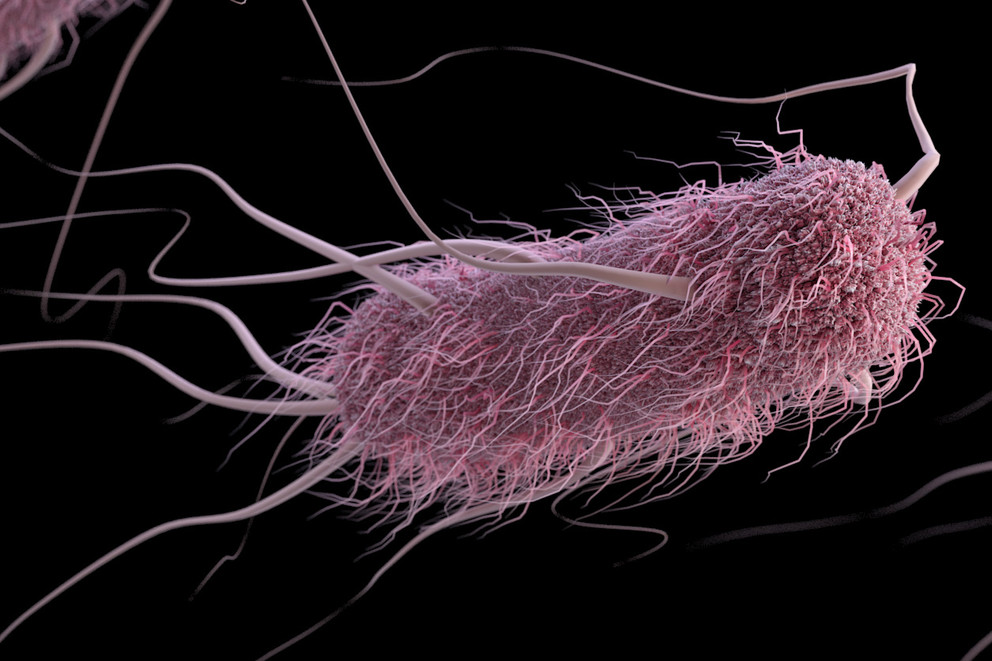We study the
physics of how biological systems interact with their environments, as well as the role of these interactions in shaping organismal morphology and behavior.
We work on problems across organismal systems and levels of biological organization. While the underlying mechanisms (and the techniques we use to study them) may vary as we shift our focus from
molecular motors to bacteria to animals, the larger questions we are fascinated by remain the same!
- How do biological systems sense and respond to mechanical stresses in complex environments?
- In what environments do adaptive mechanics improve performance?
- How do flexible locomotive strategies affect the evolution of biomechanical structures?
Want to learn more about what we're working on? Check out our publications or contact us!

Bacterial flagellar mechanics.
Over 80% of bacteria, including several human pathogens, rely on flagella to swim. Flagellar rotation is driven by the ion-powered bacterial flagellar motor (BFM), and flagella are fundamental for bacterial processes at a wide range of timescales. Our lab asks questions across this range: What is the structural and mechanistic basis for environmentally-driven remodeling in the flagellar motor within seconds to minutes? How does flagellar morphology shape swimming performance? How do flagella regulate transitions to multicellular lifestyles (biofilms, swarming)? What selective pressures have shaped the diversity in flagellar structure across bacterial lineages over evolutionary timescales?
Relevant papers | Image: CDC

Walking in panarthropods.
Panarthropods are a stunningly varied group, including insects, crustaceans, tardigrades, and centipedes. Despite their ecological and morphological diversity, walking panarthropods display striking commonalities in their stepping patterns. The topology of the neural architecture underlying walking (in the ventral nerve cord, or VNC) has been noted to be conserved across panarthropods. We are excited both about asking questions on the origin and evolution of panarthropod walking, as well as understanding how to better design simple, small circuits that can control multiple limbs in complex, variable terrain.
Relevant papers | Image: L. Duran

Biophysics and mechanobiology.
Understanding the link between structure and function is one of the central goals of molecular and cellular biophysics. We are interested in how molecular motors, like the bacterial flagellar motor and ATP synthase (among others!), convert electrochemical energy into mechanical work. Our lab uses both theoretical and experimental tools (including but not limited to: quantitative microsopy, fluorescence, molecular genetics, optical and magnetic trapping) to tackle these questions. We are also really excited about designing and building novel biophysical setups to study molecular systems.
Relevant papers | Image: PNAS

Motility in complex environments.
To survive and reproduce, organisms must often nagivate spatially complex and temporally dynamic terrain. The impact of environmental variability on organismal performance is of particular interest given the anthropogenic effects like climate change and urbanization. Our lab is broadly interested in how organisms sense and respond to mechanical cues from their environments -- ranging from phototaxis in unicellular organisms to complex locomotive behavior in vertebrates (e.g., multi-modal strategies for water walking in geckos, shown above). We are also interested in how flexible locomotive strategies affect the evolution and diversification of biomechanical structures.
Relevant papers | Image: P. Jennings




